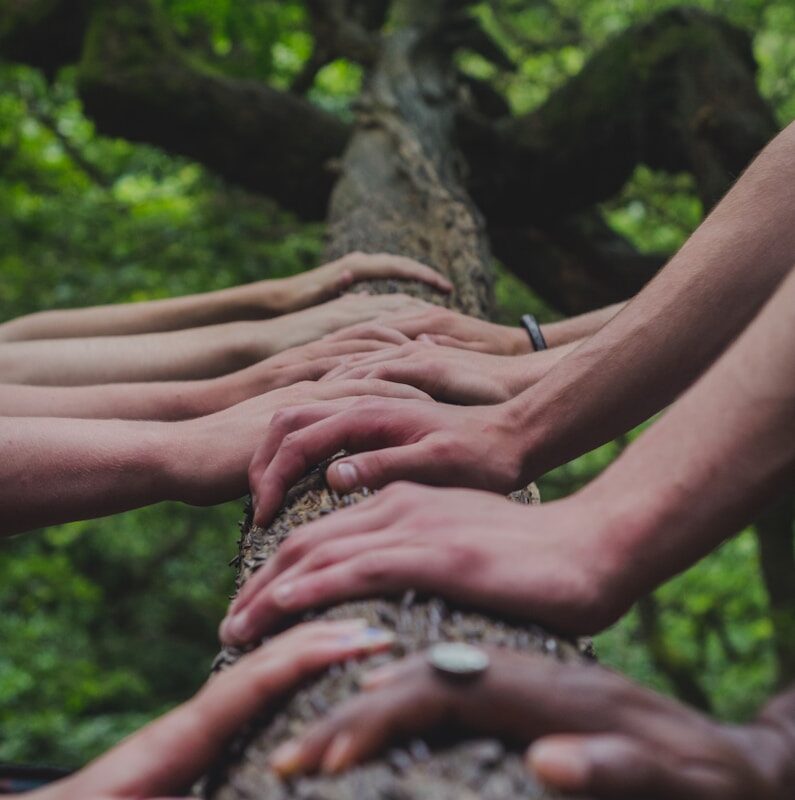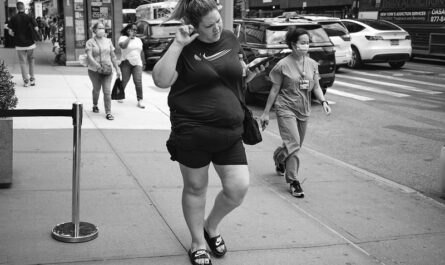Representation in media goes far beyond simply filling screens with colorful images. It shapes perceptions, fuels self-esteem, and influences cultural norms on a global scale. When media reflects a broad spectrum of human bodies, identities, and experiences, it sends a powerful message: everyone matters, and every form of beauty is worthy of recognition. In this article, we explore why diverse representation is not just beneficial—it is essential for fostering a more inclusive, empathetic, and equitable society.
Understanding the Role of Media Representation
Media is one of the most influential forces in modern society. From television shows and films to social media platforms and advertisements, media channels provide narratives that help form our collective understanding of the world. For decades, mainstream media often showcased a narrow set of beauty standards and body types. This homogeneity not only limited artistic expression but also reinforced a societal ideal that many found unattainable.
When people see themselves reflected on screen, whether in leading roles or in everyday stories, it validates their experiences and encourages self-acceptance. Diverse representation means that young people, in particular, have the opportunity to see a wide range of human forms and stories, allowing them to envision a future where they can belong, succeed, and be celebrated. This recognition is a vital counterbalance to the damaging stereotypes that have historically marginalized many communities.
The Psychological Impact of Seeing Diverse Bodies
Studies in psychology have long shown that media consumption can affect self-perception and overall mental health. When individuals constantly see only one type of body or look being glorified, those who do not fit that mold may develop feelings of inadequacy or alienation. Conversely, when media includes a variety of body types—ranging in size, shape, skin tone, and ability—it offers viewers a more realistic and affirming picture of humanity.
This inclusivity can lead to improved body image and self-esteem. For many, discovering characters or public figures who share similar traits can be a transformative experience. It challenges internalized biases and opens the door to a more compassionate self-view. Diverse media representation can help break the cycle of negative self-comparison, allowing individuals to appreciate their uniqueness and build confidence in their identities.
Challenging Stereotypes and Broadening Perspectives
Representation in media is also a tool for dismantling stereotypes. Historically, media has often relegated certain groups to one-dimensional roles that reinforce outdated or harmful narratives. For instance, portraying individuals with disabilities solely as inspirational figures or casting minority characters only in the context of crime or poverty can create a skewed and incomplete picture of reality.
When media expands its focus to include varied and authentic depictions, it challenges these stereotypes. It encourages audiences to see beyond superficial differences and understand the multifaceted nature of human identity. Stories that feature diverse bodies help bridge cultural gaps and foster empathy among viewers. By encountering characters with different backgrounds, challenges, and triumphs, people can begin to question their assumptions and embrace a more nuanced view of the world.
Economic and Social Benefits of Diversity in Media
The positive impacts of diverse representation extend into economic and social realms as well. For businesses, creating content that reflects a wide array of identities opens new markets and taps into previously underrepresented demographics. Consumers are more likely to engage with brands and products when they feel seen and understood. This shift toward inclusivity not only drives sales but also promotes loyalty and community building.
Socially, inclusive media can spur important conversations about equity and justice. When stories highlight the struggles and successes of marginalized communities, they can inspire activism and policy change. Films, television shows, and digital media platforms have the power to inform public opinion and influence social norms. As audiences become more aware of systemic issues—such as discrimination, lack of access to resources, and social exclusion—there is a growing collective demand for change.
Intersectionality: The Overlapping Identities That Shape Us
It is crucial to recognize that representation is not a one-dimensional concept. People carry multiple identities simultaneously, and these overlapping aspects—such as race, gender, sexuality, and disability—intersect to form complex experiences. Intersectional representation in media acknowledges that no single narrative can encapsulate the entirety of a person’s identity.
For example, a Black woman with a disability might face challenges that differ significantly from those encountered by others within her racial or gender group. When media addresses these intersectional experiences, it validates the diverse ways in which individuals navigate the world. Such representation not only broadens the narrative but also highlights the unique contributions that each person brings to society. Intersectionality in media serves as a reminder that diversity is not just about variety in appearance but also about the richness of individual stories.
The Evolution of Media and Technology
The digital age has revolutionized how media is produced and consumed. Social media platforms, streaming services, and online communities have democratized the landscape, giving a voice to creators from all walks of life. This democratization has played a significant role in promoting diverse representation. Independent filmmakers, bloggers, and influencers now have the means to tell their own stories without being confined to traditional media gatekeepers.
This shift has led to an explosion of content that features a wide range of perspectives. Grassroots movements on platforms like Instagram, TikTok, and YouTube have fostered communities where diversity is celebrated. These digital spaces offer viewers the chance to see everyday stories and personal experiences that resonate on a deeper level than scripted television dramas or blockbuster films might allow.
Moreover, technological advancements have enabled the use of data analytics to understand audience preferences better. Media companies now have the opportunity to identify underrepresented segments and develop content that caters to their interests. This data-driven approach can lead to more strategic investments in diverse storytelling, ultimately benefiting both creators and consumers.
Overcoming Challenges and Resistance
Despite the many benefits of diverse representation, challenges remain. Resistance to change is not uncommon, and there can be significant pushback from traditional industries or segments of the audience resistant to altering long-standing norms. This resistance can manifest in several ways—from tokenism, where diversity is superficially included without genuine commitment, to outright backlash against content that challenges established narratives.
Overcoming these challenges requires a concerted effort from all stakeholders, including creators, producers, and audiences. It involves not only increasing the number of diverse stories but also ensuring that these narratives are authentic, respectful, and fully realized. Media literacy programs can help audiences critically evaluate the content they consume and recognize the importance of representation. Educators and advocates play a vital role in fostering an environment where diversity is not only accepted but celebrated.
The Role of Policy and Industry Standards
In many cases, meaningful change in media representation is driven by policy and industry standards. Organizations, awards, and regulatory bodies can incentivize diversity by setting guidelines that promote equitable representation. Initiatives like diversity quotas, funding for minority-led projects, and awards that honor inclusive storytelling are powerful tools in shaping media landscapes.
Government bodies and non-profit organizations also contribute to this change by funding research and providing platforms for underrepresented voices. By establishing benchmarks for diversity and inclusion, these entities can help hold the industry accountable. Policies that support cultural and artistic diversity ensure that future generations inherit a media landscape that reflects the true spectrum of human experience.
Global Perspectives on Representation
The importance of diverse representation in media is a global issue. Different cultures have their own unique narratives, aesthetics, and traditions. When media from various parts of the world is given a platform, it enriches global dialogue and fosters cross-cultural understanding. International films, music, and art can challenge Eurocentric or monolithic views of beauty and success.
For instance, the rising popularity of films from South Asia, Africa, and Latin America has showcased a range of body types and cultural expressions previously unseen in mainstream Western media. This influx of global content has not only broadened the cultural landscape but also created opportunities for cultural exchange and learning. When audiences are exposed to a variety of narratives, they gain a more comprehensive understanding of the world and the myriad ways in which beauty and identity can be expressed.
The Future of Representation in Media
Looking ahead, the trajectory of media representation is promising. With increased awareness and advocacy, we are likely to see even greater strides in showcasing diverse bodies and identities. The next generation of creators is more attuned to the importance of inclusion, and as they take the reins, the media landscape will continue to evolve.
Future advancements in technology, such as virtual reality and augmented reality, hold exciting potential for immersive storytelling. These platforms can transport audiences into diverse worlds, providing experiences that are both transformative and empathetic. As creators experiment with these new mediums, there is a significant opportunity to push the boundaries of traditional representation and explore innovative ways of storytelling.
Moreover, as global movements continue to demand social justice and equality, media companies will be increasingly incentivized to prioritize diversity. Consumers today are more informed and vocal about the content they consume, and they expect media to reflect the realities of a diverse society. This shift in consumer behavior is likely to drive long-term change within the industry, ensuring that representation remains a central focus.
Building a Culture of Inclusion
Representation in media is not just about individual projects or isolated moments of inclusion; it is about building a culture where diversity is the norm. This requires a systemic shift in how stories are created, distributed, and consumed. It means investing in education and training for future media professionals to ensure they understand the nuances of diversity and inclusion. It also involves fostering an environment where underrepresented voices are not only heard but also empowered to lead.
Community initiatives, such as local film festivals, art exhibits, and cultural programs, can play an important role in promoting diverse representation. These grassroots efforts help create a pipeline of talent and narratives that enrich the broader media landscape. By supporting local voices and stories, communities contribute to a more balanced and inclusive portrayal of humanity.
The Transformative Power of Diverse Representation
Ultimately, the power of representation lies in its ability to transform lives. When people see characters and public figures who mirror their own experiences, they gain the confidence to pursue their dreams and overcome obstacles. Diverse media representation can spark social change by challenging prejudices, reducing stigma, and inspiring individuals to embrace their true selves.
This transformative power is evident in countless success stories across various industries. From fashion to sports, literature to cinema, representation has empowered individuals to break barriers and redefine success. By celebrating diversity, we not only enrich our cultural landscape but also lay the groundwork for a more just and equitable future.
Conclusion
The inclusion of diverse bodies in media is far more than a trend—it is a critical element in shaping a society that values every individual. As we have explored, representation has profound implications for personal identity, social perceptions, and cultural progress. When media authentically reflects the myriad forms of human existence, it empowers individuals, challenges harmful stereotypes, and fosters a culture of acceptance and respect.
Moving forward, it is essential for creators, consumers, and policymakers to continue advocating for diverse representation. By holding the media accountable and celebrating inclusive storytelling, we can pave the way for a future where every voice is heard, and every story is valued. In a world increasingly defined by its differences, the power of representation reminds us that our diversity is our strength—a strength that, when showcased in media, can inspire lasting change for generations to come.



